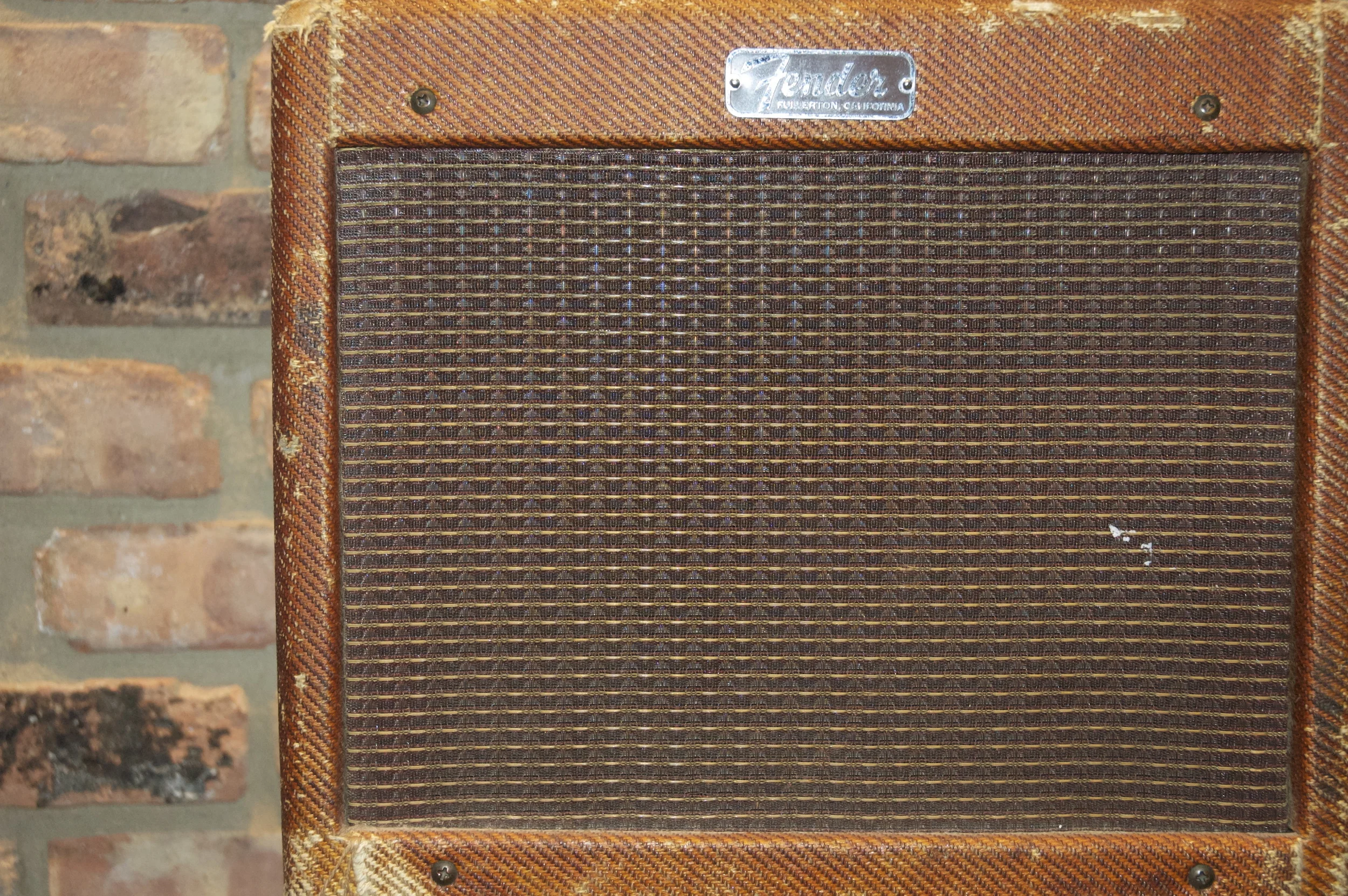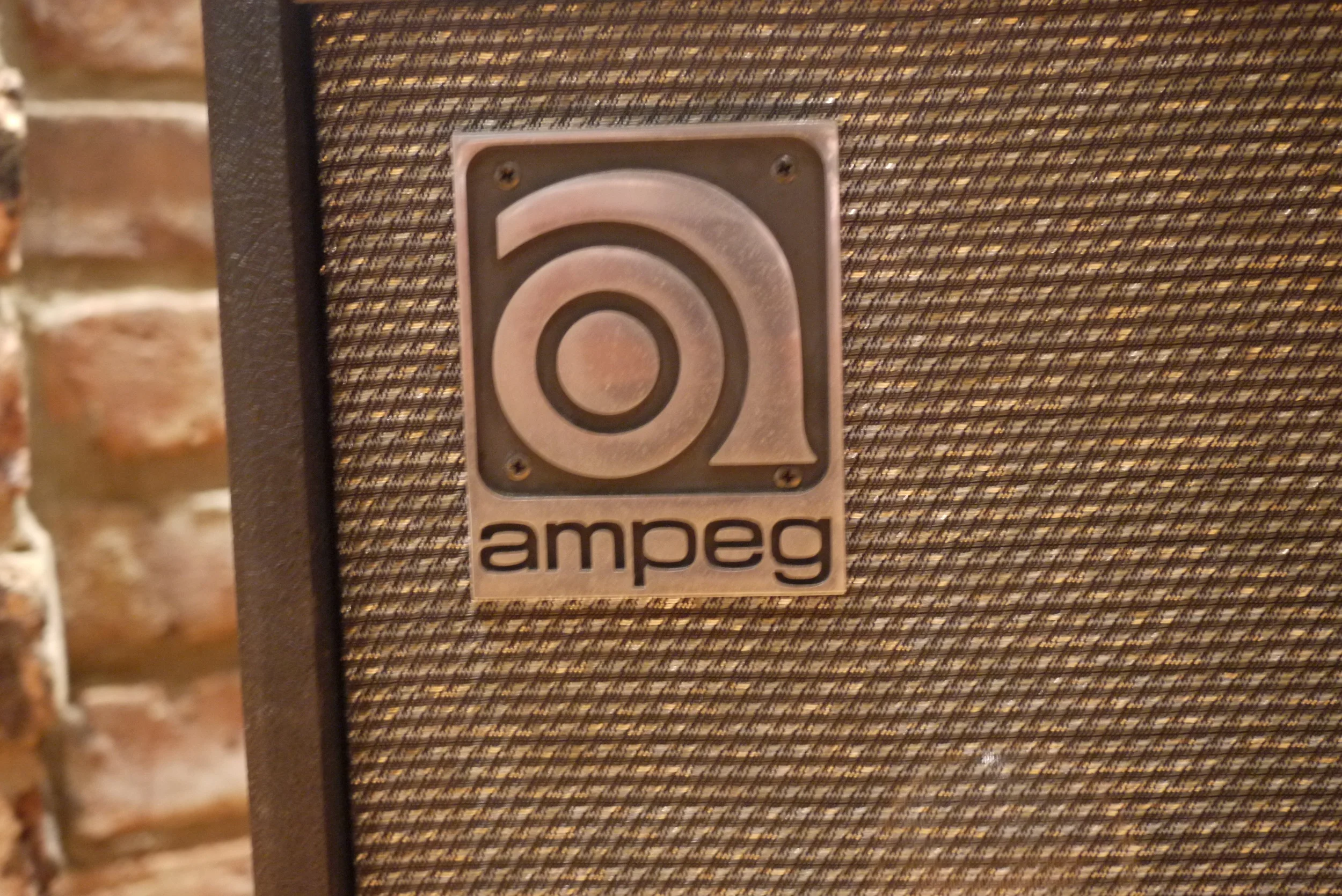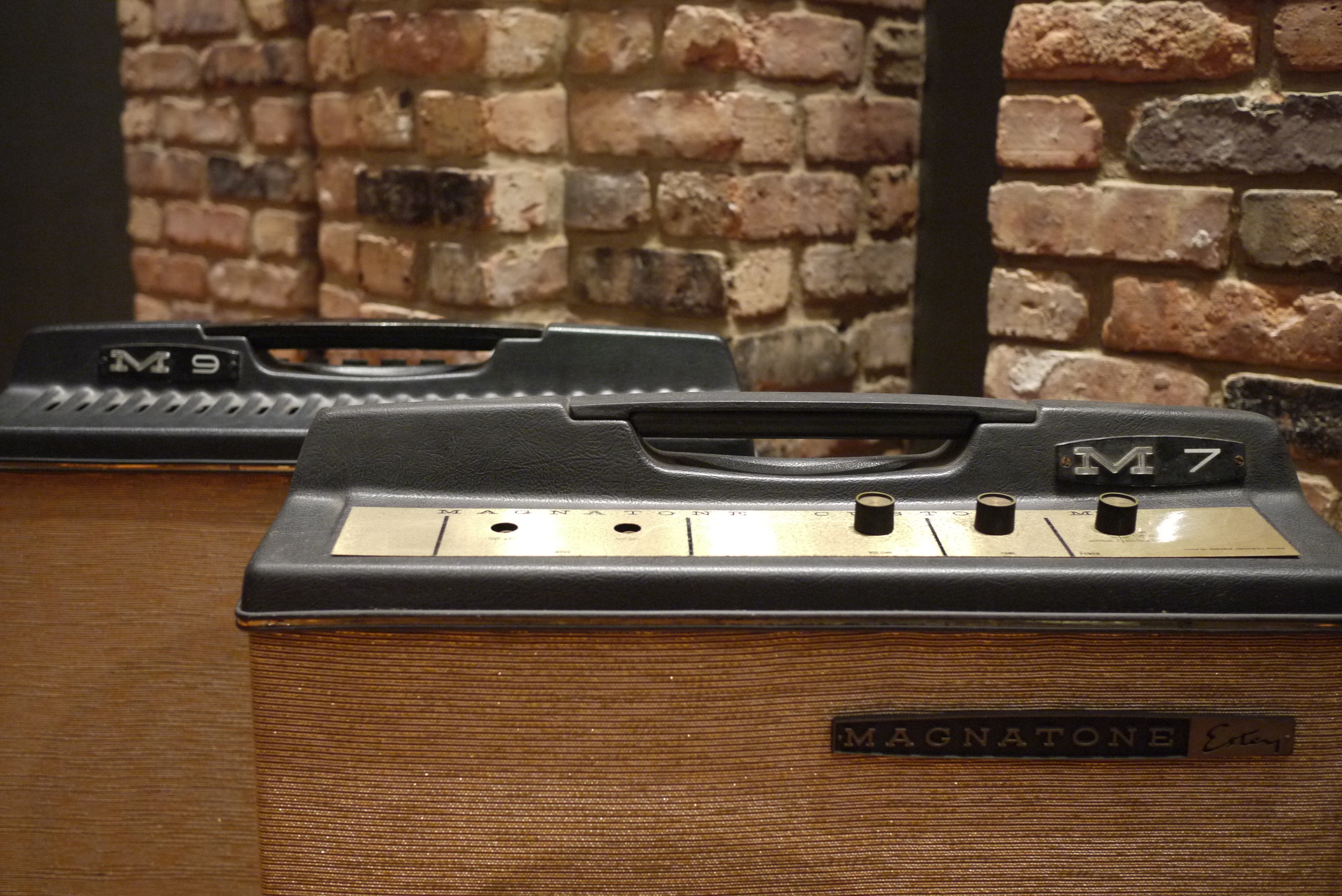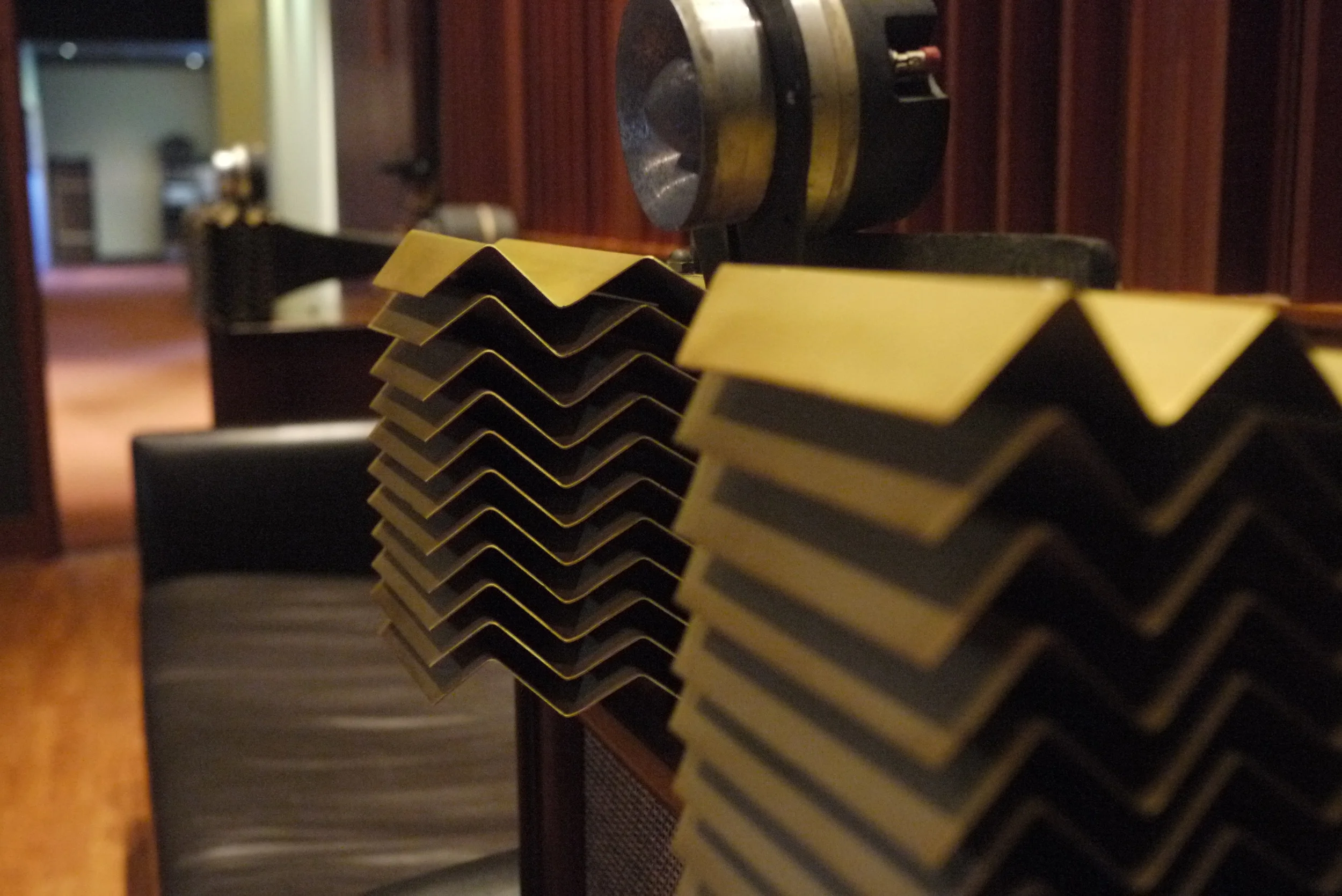
In the 80's this little Trident was made to compliment a larger console for tracking.
16 channel strips that have direct outs, inserts, line and mic amps with EQ. The mic amps use transformers and they have a powerful sound. "Appetite for Destruction" was tracked and mixed through an 80 series Trident, which is similar to this sidecar. The EQ is slightly different, while the mic section is the same.
I really enjoy using the Trident and the Langevin to get to tape or computer interface. Tracking with mic amps made with transformers is a joy. Also, mixing out of the box through 8 channels of Trident, and 20 channels of Neotek works extremely well.
The Trident has a color while the Neotek is transparent.The Langevin, of course, is the most colored and is able to overdrive if you push it. The summing in a transformer based unit like an old Langevin is fun because one can find a sweet spot. A transparent console like the Neotek clips at hot levels, not too much to gain from overloading there, and I've read that the Trident trimix, 70 and 80 series consoles have a less than awesome summing or master section.
I really like the sound of the EQ in the Trident. Sending stereo tracks through the Trident (to access the EQ), then routing to the Neotek's return paths while individual tracks show up on the Neotek's channels make for a big sound. I can't help but wonder what would happen if I were to access the "remix" outputs of the Trident (2 buss), allowing me to plug the entire Trident into the Langevin.

The tweed Champ is a rock god's staple. Clapton used one for recording "Layla". This one is mellow, aged, and blooms at every volume setting. I remember trying this one out at Cream City Music here in Milwaukee. The very first note I heard captured me; I barely played a minute before I knew it was coming home with me. This is a single-ended, simple design that just works great for recording. The tiny 8" speaker delivers deep, rich bass and bell-like harmonic overtones. I like to use a hot plate with just about every amp I track with, and this Champ has an rca output jack enabling the addition of any speaker cab you want (you need an adaptor). The first thing I did when I got this back at the studio was hook up a Marshall 4x12 loaded with original greenbacks. I just cranked the little Champ up all the way and let it rip for a good hour. Crazy great tone. The real charm of this piece is the portable yet giant tone that sits large in every mix I've tried. A favorite of my friends Tony and Mike, they often use just this amp covering a wide range of tones and genres. A desert island amp.

This is a go-to amp in the studio. Do you want super shimmery clean? Perhaps a fat gnarly semi-overdriven Tele? OK, how 'bout a creamy smooth yet edgy Les Paul fuzz tone? Done. Oh, what's that? You gotta have a fantastic tremolo, too? Fine. You want this amp to sound fantastic through Celestions, Jensens, or whatever? Okedoke. This is probably the most used amp in the live room. Consistently great.

This thing is ridiculous. I read somewhere that more albums have been recorded to an Ampex 351 than any other tape machine. Elvis, Sun Studios, and the like. Google it; it's an American icon.
The really fun thing to do is use the preamp as a tracking preamp, bypassing tape. There are some mods to do. I've tried the Altec 1567a tube mixer, 2 different Grommes Precision tube mixers, some homemade ones, etc... None of them come close to what the Ampex can do. It ain't flat, but who wants that? A ribbon mic into one of these is a huge surprise. I can get crispy top end on an acoustic guitar this way.
Crazy, my experiments with ribbons have often left me wanting more top end if it was pointed at a guitar or voice. The Beyer 160 is an exception, I use it everyday on drums, but a Royer 121 is a dark, chunky thing typically. Through the Ampex, the response is so colored, I actually attenuated top end when I tracked slide acoustic guitar.
As of this writing, my go-to signal chain for guitars, bass, mono room mics, voice, piano, etc. is the Ampex into a Fearn EQ, then a Inward Connections tube limiter. This is an expensive route for sure, and it sounds like it.


Some of my favorite times playing live and recording tones where through an Ampeg G20. A friend had a beat up one, and I adopted it while we played in a band together circa 1990. The G20 I was using had a screw drilled into what was left of the volume potentiometer, bent at an angle. I had a Tele and a Rat pedal. That's it.
We played hard core punk music in frat houses and dirty clubs in VA. At the fraternity parties, we where often shut down mid-set. The police would show up, and we'd watch the crowded house party empty. Then we'd pack up P.A. and backline back into the van. Having a portable combo based guitar rig was key. You don't get paid to play Hard Core, and you never know when you might need to evacuate.
So this little guy replaced a much larger half stack whenever we played places we needed to provide P.A. for. I liked the tone so much that I used it to record a demo. I remember the vibrato being quite severe, reminded me of a helicopter.
A few years ago, I tried locating the original amp, I wanted to experience the crunchy, thick, responsive tone I loved back in the day. A friend has it in Chicago; it's missing speakers, needs a complete re-haul. Then just a few weeks ago, I find this one NOS in a liquidation sale here in Milwaukee. My amp tech replaced filter caps, added a grounded cord, and now I can time travel back to 1990, smell the frat party potpourri again. Ah, the intoxicating, delicious combination of spilled beer, cigarette smoke and sweat, all blended together in a van full of punks.

The pitch shifting vibrato in a Magnatone is unlike any other. Two of these in stereo might just make you dizzy. The perfect compliment to a Fender or Marshall, these amps deliver smooth, creamy, dark blankets of sound.
The M7 is a bass amp with a tweeter, while the M9 is all guitar with just a 15". The M7 was an entry level model aimed at students, no vibrato, no frills, but it sounds more aggressive than other Magnatones I've tried. The M9 takes a pedal great. I love both of these guys. Even the crazy suitcase styling is cool to me. The lit up M is super retro chic too.
I like to think of the Magnatone sound as a refined version of what the common amp was delivering back in the 60's, while the more accessible Fenders and Marshalls were making their marks being bright, brash, and smashing ear drums left and right. The player with more dough and schooling might choose the Magnatone. I think one could easily pull off a jazz gig with one of these, then run across town and rockabilly all night, get up the next day and record a pop tune with the same rig.
Or maybe, Magnatone priced their product higher than other amps back then to distinguish themselves; it was probably rare to find a bar band with one of these playing blues in Chicago. More likely, the combo in the jazz clubs, or the polka band in the brew house. Yup, accordions plug right into one of these just fine.
What could be better than a cheesy accordion amplified with some warbly pitch shifting vibrato?

I used to use one of these (stock) with a JCM 800 for gigs and recording back in the early 90's. Great, focused, chunky tone. You can pick one of these up for cheap, and they are convenient, light, easy to transport, etc.
It dawned on me one day to try out some old alnico Jensens in place of the newer ceramic Celestions. So, I tried installing two (because that's all I had at the time) and Whamo! I was hooked. I eventually found two more p10n's and wired in 4 of them bad boys. My thought was that I might get close to the Tweed Fender Bassman (holy grail) sound if I could just get a proper tweed circuit hooked up to this. I've tried a '57 Champ and a '51 Pro to great effect. The Blackface Bandmaster is a perfect match, and with a Tele in front, look out!

I'll never forget my first JMP experience. It was my first real amp. I played a gig one night, two sets at a club in VA. Every note was as clear as a bell. I was nervous that everybody could hear EVERYthing I was doing. I wasn't used to the brutally honest delivery I was experiencing. I think I just had a Strat, tube screamer and a Vox wah. The power was undeniable, and I questioned my ability to handle it. Much like dancing on a dragon's tail while the princess watches in horror.
ANYWAY, EL34's pushed to the limit with a 4x12 of greenbacks are my kind of party. You have not lived (as a guitar player) until you feel the sag and response of a P90 equipped Les Paul junior plugged straight into a proper JMP. Just delicious.
